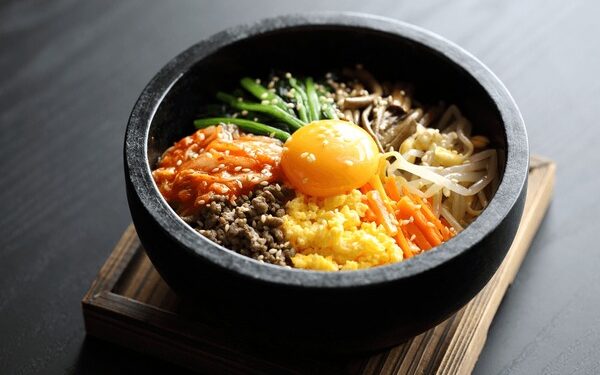
Bibimbap, a vibrant blend of rice, vegetables, and meat, is a culinary icon not just in Korea, but around the world. This seemingly simple dish boasts a rich history and diverse regional variations, each offering a unique glimpse into Korean culture.
From Ancestral Rites to Fields of Plenty
The origins of Bibimbap are shrouded in fascinating stories. Some believe it evolved from traditional ancestral rites, where cooked rice and various dishes were offered. After the ceremony, families would partake in a meal called “Eumbok,” where Bibimbap is thought to have emerged from the practice of mixing leftover offerings with rice. Another theory suggests Bibimbap arose from a practical custom. During communal farming activities, Koreans would bring their own food and share it all together, creating a spontaneous feast in the fields.
A Regional Tapestry of Flavors
Bibimbap’s beauty lies in its regional variations. Jeonju and Jinju are particularly famous for their distinct styles. Jeonju’s Kongnamul-bibimbap is an elaborate vegetarian delight, featuring 30 ingredients and rice cooked in fragrant beef broth. It’s a true botanical garden in a bowl! Jinju’s Kkot-bap, or “flower bibimbap,” lives up to its name with its vibrant presentation and broth made with littleneck clams.
Beyond the Ordinary: Heotjesat-bap
Heotjesat-bap, literally meaning “faux-sacrificial Bibimbap,” is a unique dish from the Gyeongsang Provinces. This hearty Bibimbap skips the actual memorial service but retains the ceremonial flair. Stories claim Yangban nobles (gentry class) would pretend to hold ancestral rites just to indulge in this delectable dish. Another theory suggests commoners, forbidden from elaborate rites, created a similar meal for their own enjoyment. Heotjesat-bap features rice seasoned with soy sauce instead of chili paste, accompanied by a rich beef and radish broth, an array of savory side dishes, and even brochette skewers of seasoned beef, tofu, and fish.
Mountain Bounty and Sizzling Sensations
Sanchae-bibimbap, a lighter and fragrant dish, features wild-grown mountain vegetables and herbs mixed with rice. This creation is attributed to Buddhist monks seeking a simple and flavorful meal. Dolsot-bibimbap, the ever-popular “stone pot Bibimbap,” is a sizzling delight. The hot stone pot creates a crispy rice crust (Nurungji) at the bottom, adding a delightful textural contrast to the dish. The sound of the sizzling pot and the joy of scraping off the crispy rice are experiences cherished by both Koreans and international visitors, who often compare the crust to the beloved Socarrat of Spanish paella.
Bibimbap is more than just a meal; it’s a journey through Korean history, traditions, and regional specialties. So next time you savor a bowl of Bibimbap, take a moment to appreciate the rich tapestry of flavors and stories it represents.



